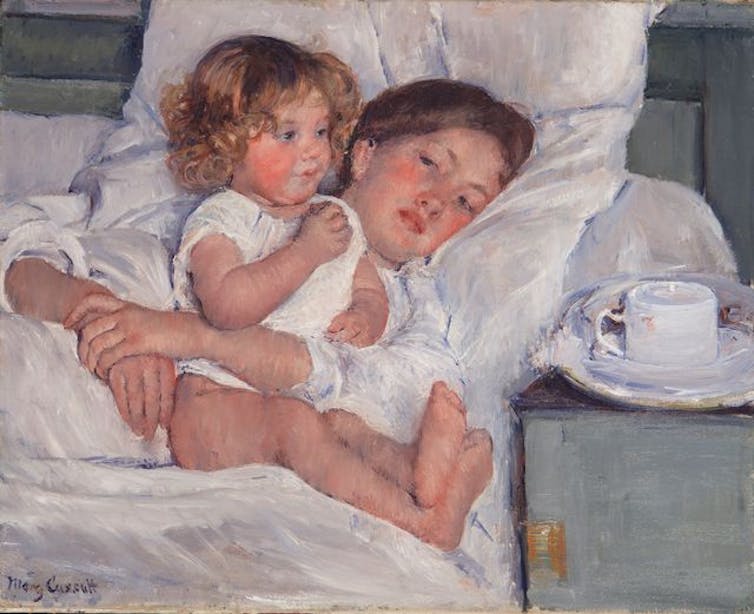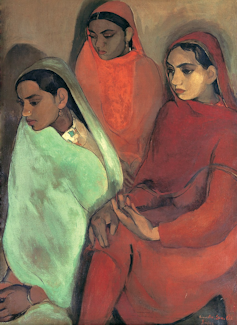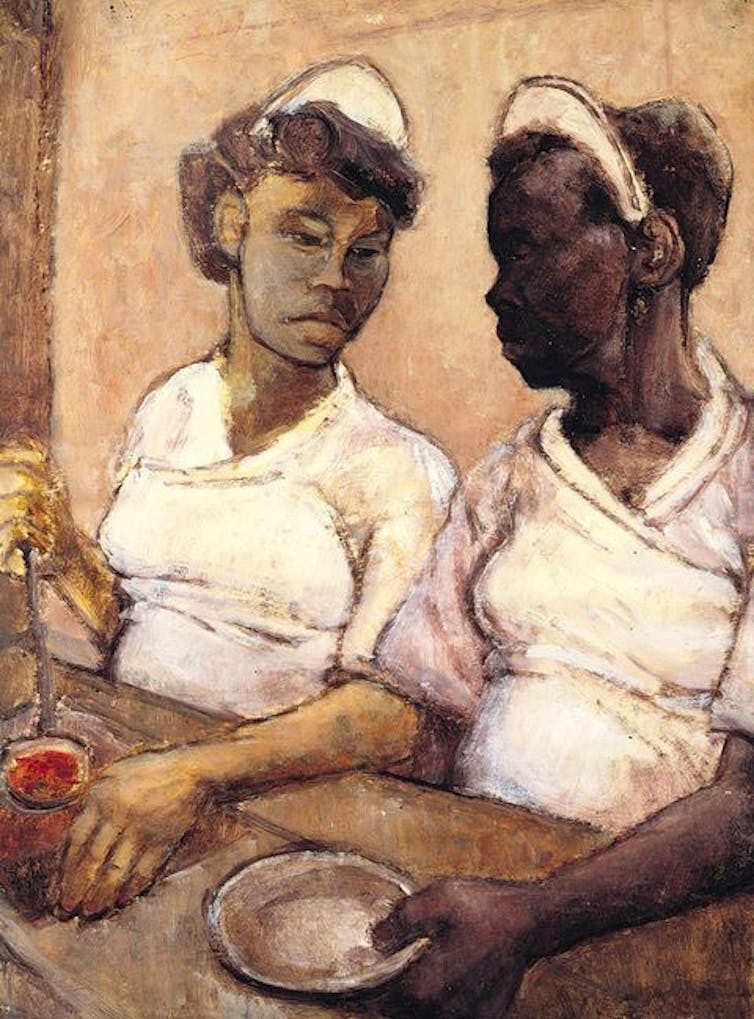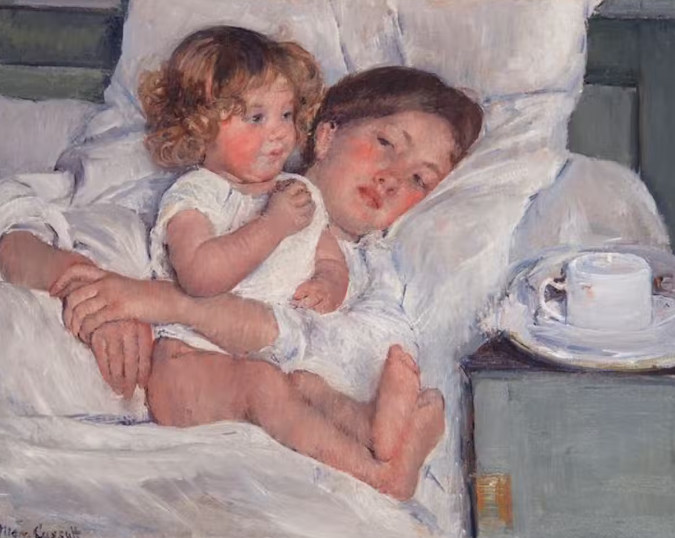Wrote by Lecturer in Fine Art, Manchester Metropolitan University, by The Conversation.
Have you ever wondered where all the women artists are when wandering through a museum or browsing a book about the history of art ? Women artists, and in particular women painters, have always been around, but until recently they haven’t appeared much in books, on TV, or hanging on the walls of museums.
In a new pocket-sized book, art writer Lucy Davies walks us through a lineage of woman painters, beginning with a nun in the 11th century and concluding with some of the most exciting female artists working right now.
An Opinionated Guide to Women Painters is a brief but engaging exploration of its subject. Though historically cast aside and downplayed in contrast to their male peers, women determined to paint – like the 16th-century trailblazer Artemisia Gentileschi (1593-1656) – carved out space both mentally and physically for their work.
By 1890, two thirds of students at London’s Slade School of Art were women. Kicking back against the establishment, the “New Women” painters of the 1910s and 1920s were followed by uncompromising female artists like Frida Kahlo (1907-1954) and Georgia O’Keeffe (1887-1986). Then there were the mid-century mavericks like Sonia Delaunay (1885-1979) and Bridget Riley (1931-) who were instrumental in advancing European abstract art, and the feminist painters who did things their way like Alice Neel (1900-1984) and Paula Rego (1935-2022). Second-wave feminism in the 1970s and the Black British Art movement in the 1980s challenged prevailing conventions and helped raise the profile of women artists.

These women succeeded in honing their skills and contributing to the development of art. Through their own networks of support and camaraderie, women painters throughout history have overcome obstacles to produce experimental work reflecting their lives and experiences. Davies reveals how this artistic experimentation by women influenced the trajectory of art, both conceptually and materially, concluding: “It is impossible to fully understand the history of art without them.”
Painters making their mark
The 66 painters featured take the reader through the key moments of the development of art, beginning with the nun Hildegard of Bingen (1098-1179) and ending with young British painter Flora Yukhnovich (1990-). Davies focuses on women who have experimented with materials and ideas, testing out new ways of thinking and making.

Each artist’s entry frames the work within the key societal and cultural moment of the artist’s lifetime. This is important. How can we separate the context and biography of an artist from their output? Art, by its nature, explores and records the experience and context of the artist.
The book highlights artists from a range of backgrounds, faiths and ethnicities, from well-known painters to those less widely known. Those include Sarah Buffin (1784-1850), born without arms or legs, who painted with her teeth or by attaching her brush to her sleeve. Buffin painted mainly portraits and still lifes, exhibiting widely.
Another is Amrita Sher-Gil (1913-1941), introduced as a “pioneer of modern Indian art”. Her mesmerising painting Three Girls conveys a trio of figures cast in a warm, golden light, making the reds and oranges of their clothing glow luminously.
Hilma af Klint’s (1862-1944) giant, colourful, abstract works were inspired by her practice as a medium. She also remains the most visited exhibition in the New York Guggenheim’s history. Bridget Riley defined the emergence of op-art in the 1960s, and at 92 years old continues to reimagine painting, is also included. With each page this book uncovers painterly jewels to spark the reader’s imagination and curiosity.

The landscape now
At the end of the book the reader finds themselves back in the 21st century, with a more equal playing field, revealing a rich, diverse community of contemporary women painters at the helm of painting today. These include Amy Sherald, (1973-) who was selected by first lady Michelle Obama to paint her official portrait. Another is Chantal Joffe (1969-), who paints larger-than-life portraits, usually of women and girls (often her own daughter). Her work offers a psychological insight into the complexities of being a mother and an artist.
Momentum has continued to build. Painting is once again capturing the public imagination and major museums and galleries are showcasing artists of all genders, ethnicities and backgrounds. Though education, exhibitions and conversation, the story of art has brought women firmly into the spotlight alongside men.
Women now have a stronger voice than ever before: women are at the helm of museums globally, and since Rachel Whiteread (1963-) won the prestigious Turner prize in 1993 (the first woman to win the award), women have continued to be recognised and rewarded for their artistic output.

There is still a way to go. Museums are still working to redress the balance from centuries of excluding women and their work. In 2023, Tate Modern announced a rehang of its permanent collection, giving more space to women. As Davies states in her introduction, significant works from art history by male artists are still commanding the highest prices at auction, but thankfully due to the work of artists, academics, writers and scholars, parity is on the horizon.
The final pages of the book include a detailed resource for further reading including books, essays, podcasts, museums and a five-page glossary of terms, breaking down the specialist language used in the book, making this guide accessible to a broad audience.
An Opinionated Guide to Women Painters is an excellent place to begin an education about the women who have contributed to the history of western art. As a painter myself, this book will sit close by, and I will gladly return to it again and again to remind myself of the the groundbreaking women artists of the past, and how they have shaped all of our futures.

